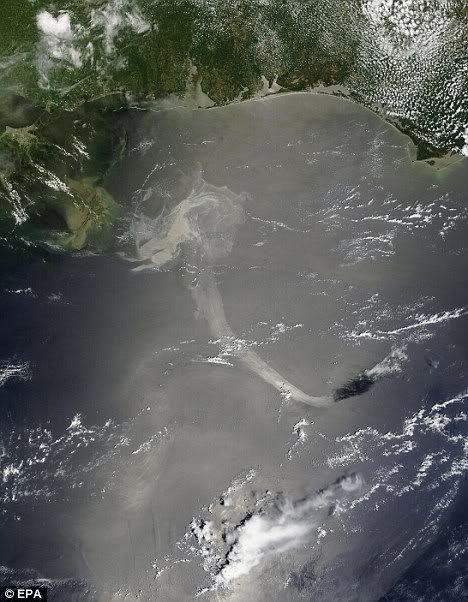
Disaster: This image taken by a NASA satellite shows the oil spill perilously close to the U.S. coastline
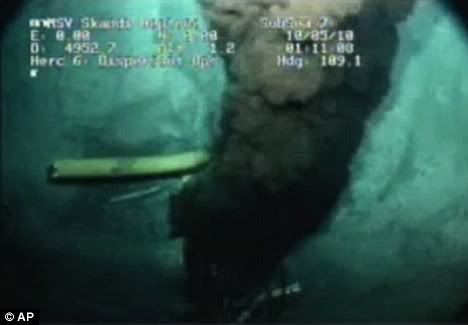
Spill: Plumes of oil pour from the ruptured well after the Deepwater Horizon rig sank last month
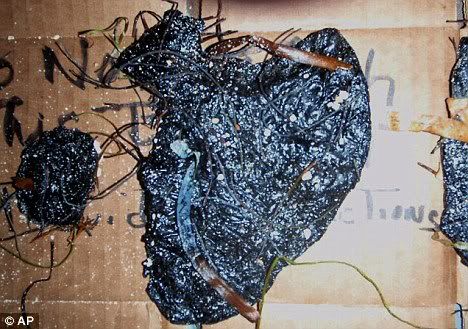
Pollution: A tar ball found in Key West, Florida. Analysis revealed they were not from the Gulf of Mexico spill
Oceanographers have predicted that crude oil from the leaking undersea well could be carried as far afield as Florida Keys, Miami and Cuba by strong currents in the gulf.
BP is still struggling to contain the leak, which has already dumped oil debris ashore on the coasts of Louisiana, Mississippi and Alabama threatening fisheries and wildlife areas.
But there was some better news today as analysis of samples found on Florida Keys beaches found they did not come from the Gulf of Mexico leak.
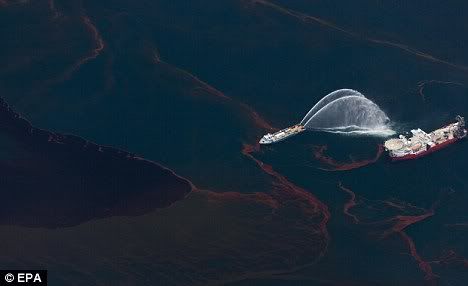
Damage: BP has installed a siphon pipe which is removing 40 per cent of the daily leaked oil
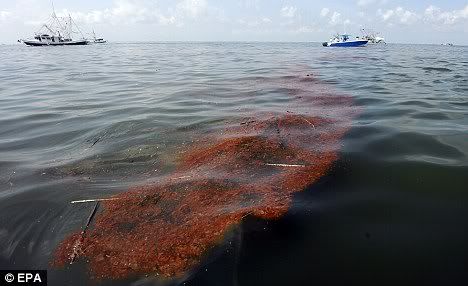
Slick: Rust-coloured oil debris floats on the water at the mouth of the Mississippi Delta
Laboratory tests on 50 tar balls - blobs of semi-solid oil found in the water - discovered on the Lower Keys, a mecca for divers, snorkelers and fishermen, revealed they were not from the Gulf of Mexico spill.
Tar balls are not uncommon in Florida Keys, which has around 8,000 commercial vessels passing through it every year. Some of the vessels defy anti-pollution rules and wash fuel oil from their tanks.
Andy Newman, of the Monroe Tourism Development Council, said: 'Even if we don't get a gumball-sized tar ball down here in the next month, there has already been significant perception damage to Florida Keys and Florida tourism.
'We understand we are not out of the woods yet, that there's more oil out there.'
BP has said a siphon tube inserted into the well is capturing an estimated 2,000 barrels (70,000 gallons) a day from the ruptured undersea Macondo well - around 40 per cent of the amount that was gushing out.
Environmentalists warn that the spill, which followed an April 20 explosion on board the Deepwater Horizon drilling rig, could prove worse than the 1989 Exxon Valdez disaster off Alaska.
Authorities have nearly doubled a no-fishing zone to 19 per cent of U.S. waters in the Gulf affected by the spill.
The spill has forced President Barack Obama to put on hold plans to expand offshore oil drilling and has raised concerns about planned oil operations in other areas such as the Arctic.
BP, which has seen its market value cut by £21million, has said it plans to increase the amount of oil captured from the well as it works on a permanent fix.
Gulf coast shrimp and oyster fishermen and boat operators say their business has already plummeted.
Tourism in Florida is also seriously threatened, with 80 million visitors a year generating £42million.
Experts believe the oil spill could be caught in the powerful Loop Current, which would see it washing around the Florida Keys and up to Miami's beaches.





0 comments:
Post a Comment